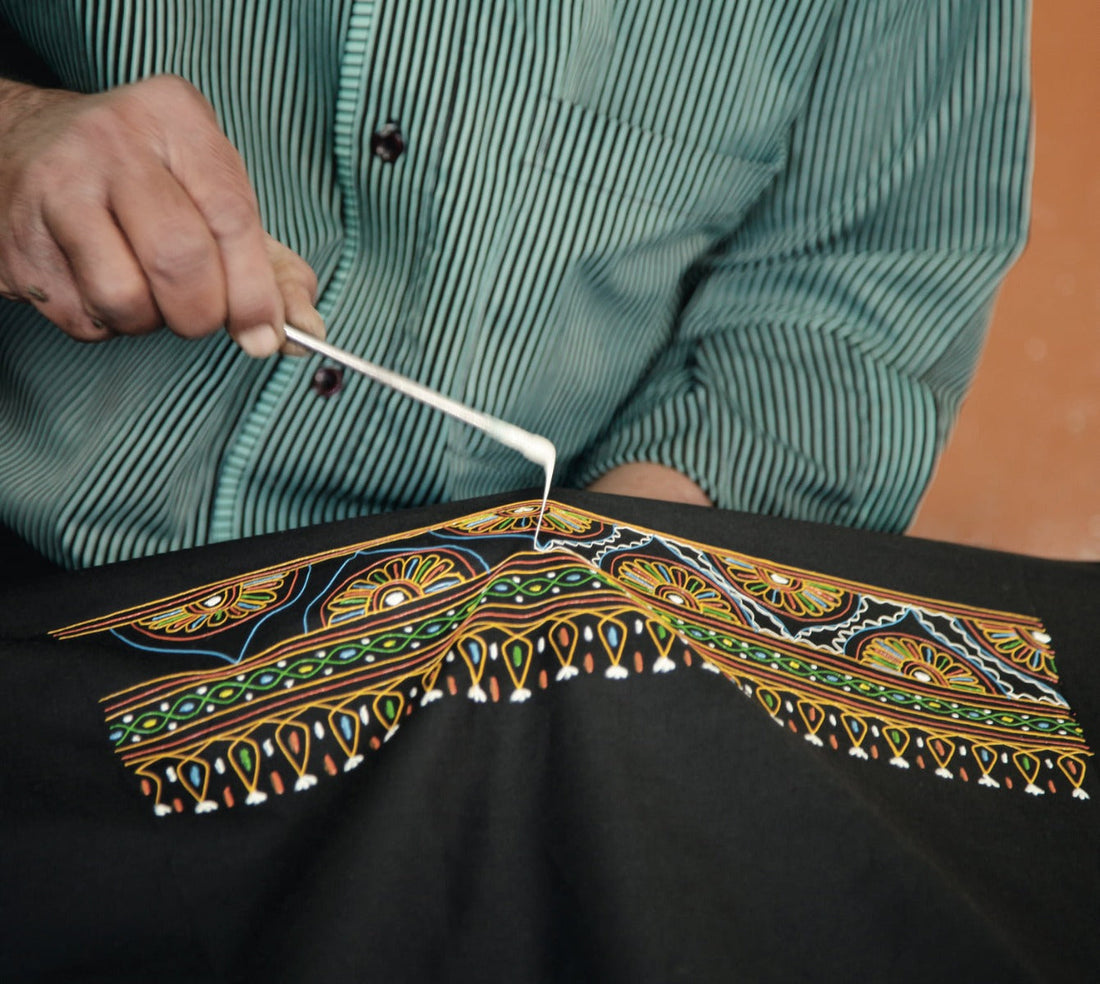
The Endangered Art- Rogan Painting
Share
In the quiet village of Nirona, nestled in the Kutch district of Gujarat, a centuries-old art form dances on the edge of extinction. Rogan painting — a delicate fusion of oil, pigment, and hand-drawn intricacy — is not just a textile craft. It is a living legacy of patience, precision, and heritage.
Rogan, which means “oil-based” in Persian, traces its origins to Persia over 400 years ago before making its home in India. The art was once practiced widely across the region, but today, it survives in just one Muslim family: the Khatris of Nirona. Passed down through generations, the process remains largely unchanged. Castor oil is boiled for two days and then mixed with natural pigments to create a thick, colorful paste. The artist dips a metal stylus into the mixture and uses a freehand technique to draw intricate, symmetrical designs — without any tracing — onto cloth, typically dark-colored cotton.
The resulting pieces, often featuring motifs of trees of life, peacocks, and geometric symmetry, feel like poetry frozen in time. Each stroke is mirrored with immense control, as only one half is drawn and then folded to imprint the other — a quiet moment of magic that feels like watching history breathe.
But despite its hypnotic beauty, Rogan painting nearly disappeared. With industrialization and the rise of machine-made prints, handcrafted textile art saw a sharp decline. Younger generations drifted to other professions, and buyers forgot the name “Rogan.”
A turning point came in 2014 when India’s Prime Minister gifted a Rogan painting to U.S. President Barack Obama — a symbolic gesture that sparked brief global interest. Yet, despite such spotlight moments, the survival of Rogan art still depends on a handful of artisans, government grants, and a slow-growing interest among cultural preservationists and design connoisseurs.
Keeping this art alive is not just about preserving technique. It requires a market that values slowness over speed, human touch over automation, and stories over trends. It calls for institutions, brands, and individuals to champion the craft — not as souvenirs, but as heritage.
At STAAD, we believe Rogan painting is not a fading tradition, but a timeless testament to the depth and diversity of Indian craftsmanship. As equestrian heritage is stitched into our identity, we see Rogan art as part of the broader canvas that defines who we are — a country rich with hands that still remember.

